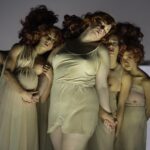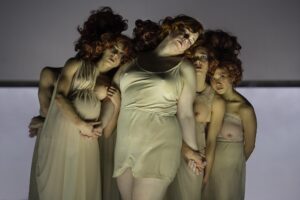
I was 13 years old when my Auntie took my grandma and me to the United Nations Headquarters in New York City. That was more than 25 years ago, it was my first trip to the Big Apple, so we were of course doing all of the touristy things. But out of Broadway and Times Square, Central Park, the Statue of Liberty, the museums and shopping the U.N. captured my imagination and remained in my memory the most.
In November 2012, the U.N. tour guides, called U.N. Ambassadors, celebrated their 60th anniversary with an online exhibit telling the history of the U.N. tour guides.
In 1952, the American Association for the U.N. hired its first 10 guides to take people through the hallways and chambers of the young international governing organization. A decade before, the U.N., coined by United States President Franklin D. Roosevelt in 1942, was used in the Declaration of the United Nations that same year when leaders of allied countries fighting against the Axis Powers, the coalition of Germany, Italy and Japan, established the international governing organization.

The U.N. came together under the same pretext as its precursor, the League of Nations, which was established during World War I by the Treaty of Versailles in 1919, but the international governing body crumbled in the face of World War II.
Leaders of the world had sought ways of uniting to manage crisis and conflicts in a peaceful manner since 1865 when the International Telecommunication Union was established. The Universal Postal Union joined the ITU in the effort in 1874. Nearly 150 years later, both organizations are specialized agencies within the U.N.
The first time world leaders came together in a large conference to discuss preventing wars was at the International Peace Conference in The Hague in 1899. The conference was successful establishing the Convention for the Pacific Settlement of International Disputes and established the Permanent Court of Arbitration. The court began its work in 1902.
In 1942, it was just the beginning of what people now know the U.N. to be. Fresh from World War II, people were curious about world affairs and needed help interpreting world events as well as learning about other countries. Guides were brought in to show off the newest and most popular building in New York City at the time, the U.N. Headquarters on the East River.
“This was considered a glamour job,” said Abbie Krasne, one of the first U.N. Ambassadors in 1954, speaking to a group of today’s guides. “But in many ways it felt like we were getting a post-graduate education in international affairs. At the same time, the atmosphere was always very friendly.”
During the 60 years the U.N. has offered public tours more than 40 million visitors have passed through the halls and chambers, guided by U.N. Ambassadors from around the world.

Today, there are more than 70 U.N. tour guides that speak a combination of more than 20 languages. The guides’ show the U.N. to nearly 1 million visitors a year, so they must not only be intelligent but also fashionable. Guides wear either their country’s traditional clothes or a uniform designed by fashion icons such as Christian Dior, Edith Head, the Italian fashion house Benetton and others. In the 2000s Italian fashion house Mondrian designed the tailored navy blue suits, white shirts and scarves with the U.N. emblem and footwear was designed by Valleverde worn today.
Our U.N. Ambassador took us down the hallways pointing out historical facts, explained how the U.N. was founded and how it operated, and answered questions about global events. We walked through an exhibition on disarmament that displayed various landmines from around the world and another exhibit with remnants of melted-down items from the atom bombs dropped on Nagasaki and Hiroshima at the end of WW II. While these exhibits were eye opening, I was in awe when we stepped into the translators’ box over the chambers where the leaders of the world made decisions on important issues of the day.

In order to answer the types of questions I had as a child and my Auntie asked about world affairs and the U.N.’s influence globally during the hourlong tour, U.N. ambassadors need to not only know a breath of information about world events but also how to communicate what is happening in several different languages. English and French are the working languages of the U.N. Secretariat, but additionally Arabic, Chinese, Russian and Spanish are official languages of the U.N.
“I always tried to be as objective as possible,” says Carmel Irandoust, a former tour guide from France who now works at the U.N.’s Protocol and Liaison Service. She says that she always compared the world as “one human body.”
“If you have one part that is hurting, it is difficult to get rid of it or cut it,” she says. “The work of the United Nations is to unite and try to heal this part that is hurting. It would be difficult to have the brain or the heart refuse to help a leg that is hurting or a hand, that really wouldn’t make sense.”
To stay on top of issues, every morning the U.N. Ambassadors are briefed by U.N. staff on the latest developments regarding the work of the organization. They are provided with an in-depth overview of topics of current interest such as landmines, children, global warming, women and more in order to keep their presentations current.
Tours are also tailored to meet audience needs from focusing more on arts and architecture of the U.N. Headquarters to accommodating disabled individuals.
U.N. Ambassadors have also taken their tours to the Internet and social networks regularly answering visitors’ questions on Facebook and Twitter.
All tours start in the Visitors Lobby, but will be re-routed as a part of the U.N.’s Master Capital Plan starting in March.
To schedule a U.N. Ambassador Tour or to walk through the halls of the U.N. on a self-guided audio tour, get your tickets here or call 212-963-8687 for general information or 212-963-7539 for tours in languages other than English.
To contract an original article or purchase a reprint or become a media partner, contact ">editor (at) girlsthatroam (dot) com.







